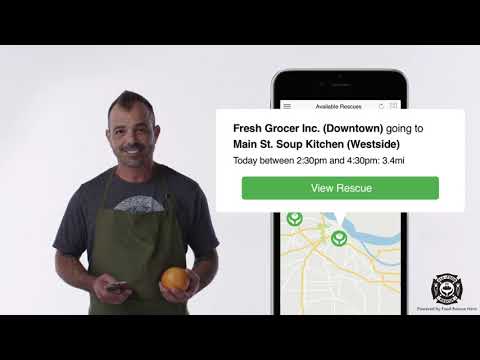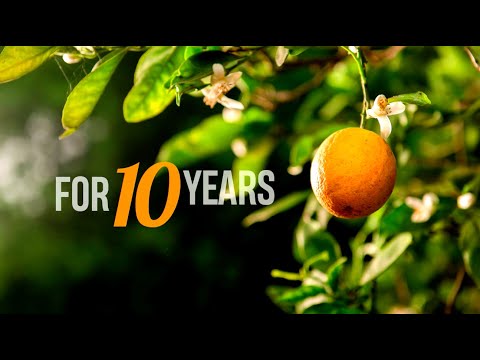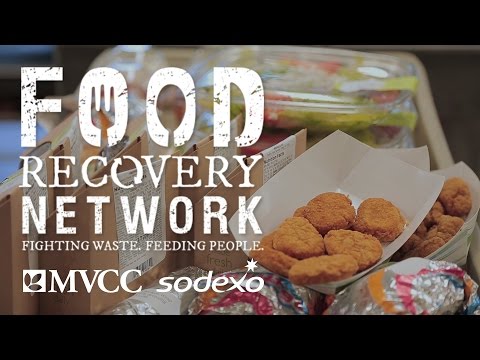9 Best Charities That Fight to Reduce Food Waste (Complete 2024 List)
Impactful Ninja is reader-supported. When you buy through links on our site, we may earn an affiliate commission.
Learn more
Learn more
.
Hey fellow impactful ninja ? You may have noticed that Impactful Ninja is all about providing helpful information to make a positive impact on the world and society. And that we love to link back to where we found all the information for each of our posts. Most of these links are informational-based for you to check out their primary sources with one click. But some of these links are so-called "affiliate links" to products that we recommend. First and foremost, because we believe that they add value to you. For example, when we wrote a post about the environmental impact of long showers, we came across an EPA recommendation to use WaterSense showerheads. So we linked to where you can find them. Or, for many of our posts, we also link to our favorite books on that topic so that you can get a much more holistic overview than one single blog post could provide. And when there is an affiliate program for these products, we sign up for it. For example, as Amazon Associates, we earn from qualifying purchases. First, and most importantly, we still only recommend products that we believe add value for you. When you buy something through one of our affiliate links, we may earn a small commission - but at no additional costs to you. And when you buy something through a link that is not an affiliate link, we won’t receive any commission but we’ll still be happy to have helped you. When we find products that we believe add value to you and the seller has an affiliate program, we sign up for it. When you buy something through one of our affiliate links, we may earn a small commission (at no extra costs to you). And at this point in time, all money is reinvested in sharing the most helpful content with you. This includes all operating costs for running this site and the content creation itself. You may have noticed by the way Impactful Ninja is operated that money is not the driving factor behind it. It is a passion project of mine and I love to share helpful information with you to make a positive impact on the world and society. However, it's a project in that I invest a lot of time and also quite some money. Eventually, my dream is to one day turn this passion project into my full-time job and provide even more helpful information. But that's still a long time to go. Stay impactful,Affiliate Disclosure
Why do we add these product links?
What do these affiliate links mean for you?
What do these affiliate links mean for us?
What does this mean for me personally?
![]()
Each year, almost 40% of all the food harvested in America goes to waste. Moreover, we lose 35% of this wasted food simply because individual people or the food industry throw it away, even though it’s still edible. At the same time, one in ten Americans experience food insecurity or suffer from malnutrition. Fortunately, many charities are working to handle the world’s food more efficiently and alleviate hunger nationwide. So we had to ask: What are the best charities that fight to reduce food waste?
The best charities that fight to reduce food waste are Feeding America, 412 Food Rescue, and Food Forward. Other charities, like the Food Recovery Network, Food Rescue US, and City Harvest engage local communities in the fight against food waste.
Whether you want to donate unwanted food to people in need, support poverty-stricken communities, or rescue and deliver leftover goods, there is a charity for you. Keep reading to learn more about what the best charities that fight to reduce food waste are all about, how they work, and what would be your best way to make a contribution.
Here’s What All the Best Charities That Fight to Reduce Food Waste Have in Common
The charities on this list were chosen based on their impact, mission, transparency ratings, and achievements.
They operate primarily in the US and they all share the same goal of reducing food waste nationwide.
Most of the charities below combat food waste and hunger simultaneously. They collect surplus food from corporate and individual donors, then redistribute it to community agencies, such as food banks, schools, or hunger-fighting charities.
They also reach vulnerable people through direct deliveries, mobile pantries, and temporary markets. In addition, they work to educate populations on how to reduce food waste in their households and advocate for sustainable changes in the food industry’s supply chains.
Yet, through these different approaches, all of these charities work to reduce food waste and combat hunger in vulnerable communities.
These Are the 9 Best Charities That Fight to Reduce Food Waste in 2024
Below are our favorite charities that fight to reduce food waste (you can click on their link to directly jump to their section in this article):
Best Charities That Fight to Reduce Food Waste
(At the end of this article we’ll also share our six-step approach on how you can select the best charity to support.)
Feeding America: An America Where No One Is Hungry

🔎
Their transparency & ratings:
Feeding America has a 4-star rating from Charity Navigator, with a 100% score for Impact & Results. They also hold the Gold Star of Transparency from GuideStar.
“Our mission is to advance change in America by ensuring equitable access to nutritious food for all in partnership with food banks and the communities we serve.”
Feeding America
⚒️
What they do:
Feeding America fights to reduce food waste by partnering with market chains, restaurants, and farmers to rescue food waste and put it into food banks. They keep the food fresh and redistribute it over long distances across the country. They also work to reach communities nationwide through mobile pantries and the Supplemental Nutrition Assistance Program that guides people to buy healthy produce. In addition, they work to alleviate food insecurity in seniors and children with school pantries, summer meals, and other programs. Moreover, their MealConnect app helps businesses match their food donations to nearby food banks.
🚀
What they’ve achieved:
Since their founding, Feeding America has rescued over 4,7 billion meals from manufacturers and distributors. Today, they have a network of 200 food banks and 60,000 pantries that serve 1 in 7 Americans nationwide. For example, in 2021, they rescued 1 billion pounds of groceries and invested $380 million in food banks and distribution. In the same year, their food bank network members delivered 3,8 billion pounds of dairy and other produce, and their MealConnect partners donated 1,4 million meals.
✨
Ways to contribute:
You can donate to Feeding America on their website. You can also contribute by making an individual or corporate food donation to one of their food banks. In addition, you can become a Food Driver or volunteer to distribute food.
412 Food Rescue: Good Food Belongs to People, Not Landfills
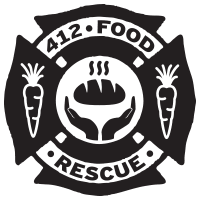
🔎
Their transparency & ratings:
412 Food Rescue has a 100% encompass rating for Finance & Accountability from Charity Navigator. GuideStar gives them the Gold Seal of Transparency.
“We are preventing perfectly good food from going to waste with our technology that mobilizes volunteers nationwide.”
412 Food Rescue
⚒️
What they do:
412 Food Rescue equips local citizens with the tools and knowledge they need to reduce food waste in their communities. They also work with food donors by redistributing the produce to local charities and underserved households. Furthermore, they empower local community members to use the charity’s Food Rescue Hero app to find and deliver food parcels from donors to beneficiaries. The charity also has zero-waste kitchens where they prepare the raw groceries they receive into nutritious meals. In addition, they use surplus food to create original products and work to redistribute previously unsellable groceries.
🚀
What they’ve achieved:
Since their founding, 412 Food Rescue has developed a network of over 16,500 volunteers that have rescued more than 21 million pounds of food and distributed 17,7 million meals across 125,000 deliveries. For example, in 2021, they partnered with 1,700 food donors and supplied nutritious groceries to over 1,200 charities and individuals. In the same year, they helped reduce food waste across Pennsylvania, California, and Ohio, while their rescues decreased CO2 emissions by 11 million pounds.
✨
Ways to contribute:
You can donate to 412 Food Rescue on their website. You can also become a food donor or volunteer to be a food rescuer. In addition, you can join their team or buy their merchandise.
Food Forward: Rescue Food. Fight Hunger. Build Community.

🔎
Their transparency & ratings:
Charity Navigator gives Food Forward a 99% encompass rating, with a 100% score for Finance & Accountability. They also hold the Platinum Seal of Transparency from GuideStar.
“By recovering edible fruits and vegetables that would otherwise go to waste, we are supporting a healthier environment and greater economic resilience.”
Food Forward
⚒️
What they do:
Food Forward combats food waste through their various food recovery programs. Their Backyard Harvest program works to gather fruits from private and public properties, orchards, and farms, and delivers it to communities in need. Their Farmers Market Recovery project collects donations of surplus fruits and vegetables from market vendors. In addition, they rescue fresh groceries from the L.A. Wholesale Produce District through their Wholesale Produce Recovery program. This food is then distributed to hunger relief organizations that serve people in need. In addition, the charity provides free fruits and vegetables to community members at regular events.
🚀
What they’ve achieved:
Today, Food Forward partners with over 1,800 hunger relief organizations to help feed around 2 million people annually. They also distribute an average of 250,000 pounds of food each day and supply over 150,000 individuals with five daily servings of fruits and vegetables. For example, in 2021, they rescued and donated 67 million pounds of produce, worth $120 million, from over 1,200 donors.
✨
Ways to contribute:
You can donate to Food Forward on their website. You can also get involved by donating food, volunteering, or joining their team.
Food Recovery Network: Fighting Waste, Feeding People
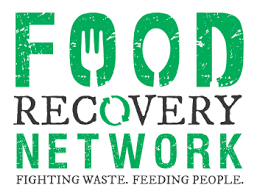
🔎
Their transparency & ratings:
Charity Navigator gives the Food Recovery Network a 79% encompass rating for Finance & Accountability. The charity also holds the Silver Seal of Transparency from GuideStar.
“We unite students on college campuses to fight food waste and hunger by recovering perishable food that would otherwise be lost.”
Food Recovery Network
⚒️
What they do:
The Food Recovery Network reduces food waste across a nationwide network of colleges and university campuses, by empowering local students to recover surplus food from their dining halls. They also collect leftover goods from food vendors, restaurants, and farms and deliver it to community service agencies like food banks, shelters, and schools. The charity also runs awareness campaigns about food waste and food insecurity among American students. In addition, they equip students to advocate for sustainable waste relief with local and national policy leaders.
🚀
What they’ve achieved:
Since their founding, the Food Recovery Network has recovered almost 11 million pounds of surplus food and donated over 9 million meals. Today, they engage students from over 207 campuses across 46 states and deliver leftover food to more than 300 partner agencies. For example, in 2020, they invested nearly $640,000 in their food recovery programs. In the same year, their 2,500 student volunteers gathered 1,3 million pounds of food and served almost 2 million meals to vulnerable communities.
✨
Ways to contribute:
You can donate to the Food Recovery Network on their website. You can also contribute by joining their network as a university donor or a hunger-fighting charity. In addition, you can sign their policy petitions or buy their merchandise.
City Harvest: Rescuing Food for NYC
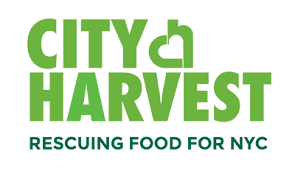
🔎
Their transparency & ratings:
City Harvest has a 4-star rating on Charity Navigator, with a 100% score for Impact & Results. GuideStar gives them the Silver Seal of Transparency.
“Since our beginning, we have worked to feed our city, one day, one meal, and one New Yorker at a time.”
City Harvest
⚒️
What they do:
City Harvest works to reduce food waste by partnering with individual and corporate food donors. The charity picks up surplus food from their partners and delivers it to soup kitchens, food pantries, and other community food programs across the city. In addition, they distribute fresh fruits and vegetables through Mobile Markets to offer citizens direct access to free nutritious produce. They also conduct Nutrition Education classes for all ages to teach healthy cooking skills. Furthermore, their Healthy Retail Program encourages healthy buying and eating while reducing the waste of fresh goods.
🚀
What they’ve achieved:
Since their founding, City Harvest has rescued and delivered over 1 billion pounds of food to help feed more than 1,5 million New Yorkers in need. Today, they have a network of 2,000 donors and 400 community agencies where they deliver 200,000 pounds of food each day. For example, in 2020, they rescued 132 million pounds of food, which stopped 42 million kilograms of CO2 from entering the atmosphere – the equivalent of 10,000 cars.
✨
Ways to contribute:
You can donate to City Harvest on their website. You can also donate surplus food or buy from partner shops that donate money from your meal. In addition, you can apply for a job or volunteer to distribute fresh goods.
Food Rescue US: Be the Rescue. Help the Planet.
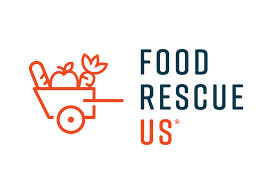
🔎
Their transparency & ratings:
Food Rescue US holds the Platinum Seal of Transparency from GuideStar.
“We are working together to put an end to hunger and food waste. Our communities are the ones that empower us to be the rescue.”
Food Rescue US
⚒️
What they do:
Food Rescue US empowers everyday citizens to reduce food waste in their local communities. They do this by engaging volunteers nationwide to transfer fresh food surpluses from local businesses to social service agencies that feed vulnerable citizens. The volunteers use the charity’s app to recover food from restaurants, farmers’ markets, shops, or other corporations, and distribute it to public kitchens, shelters, or charities. Through this model, the charity also works to create self-sustaining communities that serve themselves and contribute to a cleaner environment.
🚀
What they’ve achieved:
Since their founding, Food Rescue US has provided more than 100 million meals and kept more than 126 million pounds of excess food out of landfills. Today, they have a network of 2,400 food donors and over 15,000 volunteers that rescue and deliver goods to 2,300 social service agencies. For example, in 2021, their volunteers completed almost 60,000 rescues of over 33 million pounds of food and delivered 28 million meals in 40 locations nationwide. In the same year, their operations decreased CO2 emissions by 7,2 million tons.
✨
Ways to contribute:
You can donate to Food Rescue US directly on their website. You can also join them as a food rescuer or food donor. If they have no local branch in your community, you can also launch one yourself.
Forgotten Harvest: Driving Hunger From Our Community

🔎
Their transparency & ratings:
Forgotten Harvest has a 4-star rating from Charity Navigator, with a perfect score of 100% on three different metrics. They also hold the Platinum Seal of Transparency from GuideStar.
“We envision communities that work together to end hunger and increase individual, neighborhood, economic, and environmental health.”
Forgotten Harvest
⚒️
What they do:
Forgotten Harvest runs daily operations to rescue donated food from retail stores, restaurants, and other local businesses. Afterward, they redistribute the goods to local charities or food insecure families. They also have Mobile Pantries across Detroit and On-the-Go Pantries that reach high-poverty, underserved communities. Furthermore, their Healthy Food – Healthy Kids project provides children with access to nutritious food in after-school programs or during the summer vacation. The charity also delivers fresh food year-round in children’s facilities, shelters, and schools.
🚀
What they’ve achieved:
Today, Forgotten Harvest delivers 144,000 pounds of surplus food daily to more than 250 community relief agencies. Each year, their “Healthy Food – Healthy Kids” program serves over 200,000 food insecure children across Detroit. For example, in 2020, they rescued and distributed over 52 million pounds of produce to over 1 million people in need and helped 270,000 children across their programs. In the same year, they ran 82 mobile pantries that each served up to 750 households.
✨
Ways to contribute:
You can donate to Forgotten Harvest on their website. You can also donate surplus food or volunteer to collect or distribute goods. In addition, you can contribute by shopping their merchandise.
We Don’t Waste: Saving Food. Protecting the Planet. Feeding People.

🔎
Their transparency & ratings:
Charity Navigator gives We Don’t Waste a 99% encompass rating, with a 100% score for Leadership & Adaptability and Impact & Results. GuideStar gives them the Platinum Seal of Transparency.
“Our mission is to support the community and the environment by reclaiming and redistributing quality food to those in need.”
We Don’t Waste
⚒️
What they do:
We Don’t Waste fights to reduce food loss at community and environmental levels. They do this by working with corporate food donors like restaurants, caterers, and producers to redistribute excess groceries to nonprofit partners, free of cost. They also reach vulnerable people from underserved areas with Mobile Food Markets where they can select essential, nutritious food items. Additionally, the charity works to prevent food waste through community education and engagement that teaches skills to reduce grocery losses from households and schools.
🚀
What they’ve achieved:
Since their founding, We Don’t Waste has rescued 165 million servings of food from 165 food donors and aided more than 100 charities and vulnerable communities. For example, in 2021, they made 6,500 food pickups that distributed over 6,7 million meals to more than 4,500 households and institutions. In the same year, they handed out over 4,3 million food servings across 71 Mobile Food Markets and gained 33 new food donors.
✨
Ways to contribute:
You can donate to We Don’t Waste through their website. You can also donate food or volunteer as a food rescuer. In addition, you can become a corporate partner or consider workplace giving.
Food Gatherers: Fighting Hunger Where We Live
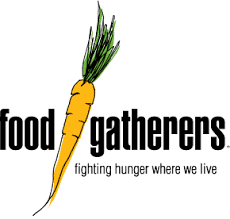
🔎
Their transparency & ratings:
Food Gatherers has a 4-star rating from Charity Navigator, with a 100% score for Impact & Results. They also hold the Platinum Seal of Transparency from GuideStar.
“We believe that in a nation of plenty, no one should go hungry. There is a role for everyone in the fight against hunger.”
Food Gatherers
⚒️
What they do:
Food Gatherers combats food waste by recovering surplus food from businesses and farmers and delivering it to those in need. They also provide free, nutritious meals for children and their families through their summer service projects and their Healthy School Pantry Program. Furthermore, they aid vulnerable citizens with their service kitchen and regular food distributions in affordable housing communities. They also educate healthcare institutions and the general public about food insecurity and advocate for legislation that fights to end hunger nationwide.
🚀
What they’ve achieved:
Today, Food Gatherers distribute 20,600 meals every day to 170 community partners and serve more than 56,000 summer meals annually. For example, in 2021, they recovered and distributed 9 million pounds of food and 7.5 million meals across all their programs. In the same year, they invested over $17 million in rescues and deliveries of food that was 60% fresh produce or protein. They also served more than 65,000 people in their community kitchen and provided 75,000 nutritious meals to children during summertime vacation.
✨
Ways to contribute:
You can donate to Food Gatherers through their website. You can also contribute by donating food or becoming a volunteer. In addition, you can join their hunger advocacy campaigns or participate in fundraising events.
How Can You Select the Best Charities to Support?
The charities on the list are, we deem, the best charities that fight to reduce food waste. However, you may have a particular charity you want to support. Let’s look at what you can do to ensure your contribution has the most significant impact.
- Check out the charity website. Charities that are worthy of your donations are transparent in their mission and their figures. Familiarise yourself with their history, mission, and values. Their website usually is the best place to start.
- Identify the charity’s mission. Without a goal, the charity is likely to fail. If the charity’s mission isn’t clear, it’s probably worth looking for a charity that does have a clear mission.
- Check if the charity has measurable goals. An effective charity has clear goals. You want to know your donation will help the charity reach its goals. But if it doesn’t have targets, it’s likely to fail or squander your gift. The charity should be able to account for its spending and supply evidence of the work they do.
- Assess the successes or goals the charity has achieved. You wouldn’t invest in a business if it kept missing its targets. In the same way, charities are like this too. If no one is assessing a charity’s progress in reaching its targets, the chances are they’re not making a substantial positive change.
- Check the charity’s financials and stats. Trustworthy organizations will publish financial statements and reports each year. Some might be exempt from having to do so, but they should be able to provide them to public members who are interested in donating.
- Locate sources who work with or benefit from the charity. Word of mouth and first-hand experience of a charity’s work lets you know the charity’s quality. If you’re able to do so, check out the charity for yourself or speak to someone familiar with it. This way, your donation will go to the right place.
How Can You Best Support These Charities?
After you’ve made your decision, it’s time for you to decide on how you’d like to help the charities you’ve chosen. Check how you can help – each charity runs specific programs that have unique aims. Find out what the aim of such programs is and whether they are right for you.
Here are a few ways you can help your chosen charity:
- Donate money. You can find donation pages on the website of most charities. Your donation can be a one-time payment, or you can set it to be deducted regularly at different intervals. You can mostly pay via credit card, but some charities also take PayPal or Bitcoin payments.
- Buy their official merchandise. The charities can also raise money by selling merchandise. So, you can support them by buying the mugs, shirts, caps, pens, pencils, and any other such items they may be selling. Ideally, you should buy as much as you can to share and spread the word about the charity’s activities.
- Engage in volunteer work. As you’ve seen from our descriptions above, some charities engage in a lot of local and grassroots programs. You can help by taking on and organizing the program in your local area.
- Help their fundraising efforts. You can spread the word about the charity in your workplace, school, church, etc., and hold creative fundraising drives on social media or offline within your small circles.
- Share their stories. Most charities have compelling stories that you can share with your audience to attract more people to the cause.
Final Thoughts
Now it is up to you to select the charity that resonates most with you. And whichever charity you end up choosing and contributing to, we are sure that they will immensely appreciate your support. Hopefully, the information within this article has made this selection process a bit easier for you to support charities dedicated to fighting to reduce food waste – based on the causes that matter most to you.
Stay impactful,

PS: Finally, I want to leave you with a thought-provoking TED talk from Dan Pallotta, a leading philanthropic activist and fundraiser, about what is wrong with the way we think about charities – and what we can do about it:
Sources
- Nutrition Connect: Food waste in America in 2020: Statistics and facts
- Food Forward: How Much Food is Wasted in America?
- USDA: Food insecurity in the US
- Feeding America: Home Page
- Feeding America: History
- Charity Navigator: Feeding America
- GuideStar: Feeding America
- Feeding America: partners
- Feeding America: reduce food waste
- Feeding America: find your local food bank
- Feeding America: hunger relief programs
- Feeding America: mobile pantry programs
- Feeding America: SNAP
- Feeding America: senior program
- Feeding America: school pantry
- Feeding America: summer food service program
- MealConnect: home page
- Feeding America: our work
- Feeding America: 2021 annual report
- Feeding America: donate
- Feeding America: food banks
- Feeding America: product partner
- Feeding America: food driver
- Feeding America: volunteer
- 412 Food Rescue: home page
- Charity Navigator: 412 Food Rescue
- GuideStar: 412 Food Rescue
- 412 Food Rescue: programs
- 412 Food Rescue: food donors
- 412 Food Rescue: nonprofit partners
- 412 Food Rescue: home delivery
- 412 Food Rescue: food rescue hero
- 412 Food Rescue: food rescue
- 412 Food Rescue: good food project
- 412 Food Rescue: upcycled products
- 412 Food Rescue: ugly CSA
- 412 Food Rescue: 2021 annual report
- 412 Food Rescue: donate
- 412 Food Rescue: donate food
- 412 Food Rescue: volunteer
- 412 Food Rescue: careers
- 412 Food Rescue: merchandise
- Food Forward: home page
- Food Forward: who we are
- Charity Navigator: Food Forward
- GuideStar: Food Forward
- Food Forward: Food recovery
- Food Forward: Who gets our food
- Food Forward: where we work
- Food Forward: 2021 annual report
- Food Forward: donate
- Food Forward: donate food
- Food Forward: volunteer
- Food Forward: join our team
- Food Recovery Network: home page
- Food Recovery Network: what we do
- Charity Navigator: Food Recovery Network
- GuideStar: Food Recovery Network
- Food Recovery Network: chapters
- Food Recovery Network: hunger fighting partners
- Food Recovery Network: national advocacy
- Food Recovery Network: 2021 annual report
- Food Recovery Network: donate
- Food Recovery Network: students feeding people
- Food Recovery Network: partner member
- Food Recovery Network: SWAG
- City Harvest: home page
- City Harvest: our story
- Charity Navigator: City Harvest
- GuideStar: City Harvest
- City Harvest: food donors
- City Harvest: food rescue
- City Harvest: where we deliver
- City Harvest: mobile markets
- City Harvest: nutrition education overview
- City Harvest: healthy retail
- City Harvest: program overview
- City Harvest: donate
- City Harvest: donate food
- City Harvest: shop for city harvest
- City Harvest: volunteer
- City Harvest: careers
- Food Rescue US: home page
- GuideStar: Food Rescue US
- Food Rescue US: how we help
- Food Rescue US: our app
- Food Rescue US: history
- Food Rescue US: 2021 annual report
- Food Rescue US: donate
- Food Rescue US: food rescuer
- Food Rescue US: food donor
- Food Rescue US: our locations
- Food Rescue US: become a site director
- Forgotten Harvest: home page
- Forgotten Harvest: about
- Charity Navigator: Forgotten Harvest
- GuideStar: Forgotten Harvest
- Forgotten Harvest: partner agencies
- Forgotten Harvest: programs
- Forgotten Harvest: Healthy Food – Healthy Kids
- Forgotten Harvest: 2021 annual report
- Forgotten Harvest: donate
- Forgotten Harvest: donate food
- Forgotten Harvest: volunteer
- Forgotten Harvest: merchandise
- We Don’t Waste: home page
- We Don’t Waste: what we do
- Charity Navigator: We Don’t Waste
- Guidestar: We Don’t Waste
- We Don’t Waste: food recovery
- We Don’t Waste: partner distribution
- We Don’t Waste: mobile markets
- We Don’t Waste: education engagement
- We Don’t Waste: 2021 annual report
- We Don’t Waste: donate
- We Don’t Waste: volunteer
- We Don’t Waste: corporate partner
- We Don’t Waste: workplace giving
- Food Gatherers: home page
- Food Gatherers: mission value history
- Charity Navigator: Food Gatherers
- GuideStar: Food Gatherers
- Food Gatherers: how it works
- Food Gatherers: programs
- Food Gatherers: community partners
- Food Gatherers: 2021 annual report
- Food Gatherers: donate
- Food Gatherers: donate food
- Food Gatherers: volunteer
- Food Gatherers: advocate
- Food Gatherers: events
- Food Gatherers: corporate partnership

